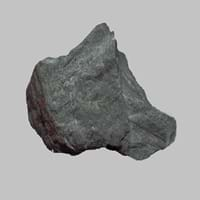Definition
Taconite is a low-grade iron ore which belongs to sedimentary rock and containing about 27% iron and 51% silica
Anthracite is a type of sedimentary rock which is hard and is variety of coal that has high luster
Origin
Western Australia, Minnesota
Pennsylvania, U.S.
Discoverer
Newton Horace Winchell
Unknown
Etymology
From the name of Taconic Mountains in New England
From Greek anthrakites, from anthrax, anthrak meaning coal
Class
Sedimentary Rocks
Metamorphic Rocks
Sub-Class
Durable Rock, Medium Hardness Rock
Durable Rock, Soft Rock
Group
Not Applicable
Not Applicable
Other Categories
Coarse Grained Rock, Opaque Rock
Coarse Grained Rock, Fine Grained Rock, Medium Grained Rock, Opaque Rock
Texture
Banded, Trellis
Amorphous, Glassy
Color
Red, Reddish Brown
Black, Brown, Dark Brown, Grey, Light to Dark Grey
Durability
Durable
Durable
Appearance
Layered, Banded, Veined and Shiny
Veined or Pebbled
Interior Uses
Decorative Aggregates, Entryways, Flooring, Homes, Interior Decoration
Not Yet Used
Exterior Uses
As Building Stone, Garden Decoration, Paving Stone
Not Yet Used
Other Architectural Uses
Curbing
Not Yet Used
Construction Industry
As Dimension Stone, Used for flooring, stair treads, borders and window sills.
Cement Manufacture, for Road Aggregate, Making natural cement, Steel Production
Medical Industry
Not Yet Used
In Chemical and Pharmaceutical Industry, Manufacture of Aspirins
Antiquity Uses
Artifacts
Not Yet Used
Commercial Uses
As a touchstone, Cemetery Markers, Creating Artwork
Alumina Refineries, Electricity Generation, Liquid Fuel, Manufacture of Soap, Solvents, Dyes, Plastics and Fibres, Paper Industry
Types
Not Available
Semi-anthracite and Meta-anthracite
Features
Is one of the oldest rock
Helps in production of Heat and Electricity, Used as fossil fuel
Archaeological Significance
Monuments
Used
Not Yet Used
Famous Monuments
Data Not Available
Not Applicable
Sculpture
Used
Not Yet Used
Famous Sculptures
Data Not Available
Not Applicable
Pictographs
Not Used
Used
Petroglyphs
Not Used
Used
Figurines
Used
Not Yet Used
Formation
Taconite is a type of sedimentary rock formed when a river carries or transports pieces of broken rock as it flows. When the river reaches a lake or sea, its load of transported rocks settles or deposits at the bottom of sea or lake.
Anthracite forms from the accumulation of plant debris in a swamp environment. When plant debris dies and falls into the swamp, the standing water of the swamp protects it from decay.
Mineral Content
Hematite, Magnetite, Quartz
Calcite, Clay, Clay Minerals
Compound Content
Fe, Iron(III) Oxide, Silicon Dioxide
Carbon, Hydrogen, Nitrogen, Oxygen, Sulphur
Types of Metamorphism
Not Applicable
Burial Metamorphism, Contact Metamorphism, Regional Metamorphism
Types of Weathering
Biological Weathering, Mechanical Weathering
Not Applicable
Types of Erosion
Chemical Erosion, Coastal Erosion, Glacier Erosion, Water Erosion, Wind Erosion
Not Applicable
Grain Size
Large and Coarse Grained
Medium to Fine Coarse Grained
Fracture
Uneven, Splintery or Conchoidal
Conchoidal
Porosity
Highly Porous
Less Porous
Cleavage
Imperfect
Non-Existent
Toughness
1.5
Not Available
Specific Gravity
5-5.3
1.1-1.4
Transparency
Translucent to Opaque
Opaque
Density
Not Available
1.25-2.5 g/cm3
Resistance
Heat Resistant, Impact Resistant, Pressure Resistant, Wear Resistant
Heat Resistant, Water Resistant
Deposits in Eastern Continents
Asia
China, India, Iran, Iraq, Oman, Russia, Saudi Arabia, Taiwan, Thailand, Vietnam
Bangladesh, Burma, Cambodia, China, India, Indonesia, Kazakhstan, Malaysia, Mongolia, Pakistan, Turkey, Vietnam
Africa
Kenya, Morocco, South Africa, Tanzania
Botswana, Kenya, Morocco, Mozambique, South Africa, Tanzania
Europe
Austria, France, Greece, Italy, Malta, Poland, Portugal, Serbia, Spain, Sweden, United Kingdom
Belgium, Bulgaria, England, France, Germany, Greece, Hungary, Kosovo, Netherlands, Norway, Poland, Romania, Serbia, Slovakia, Slovenia, The Czech Republic, Ukraine, United Kingdom
Others
Greenland, Mid-Atlantic Ridge
Not Yet Found
Deposits in Western Continents
North America
Canada, Mexico, USA
Canada, Mexico, USA
South America
Bolivia, Brazil
Brazil, Chile, Colombia, Venezuela
Deposits in Oceania Continent
Australia
New South Wales, Queensland, South Australia, Western Australia
New South Wales, Queensland, Victoria
All about Taconite and Anthracite Properties
Know all about Taconite and Anthracite properties here. All properties of rocks are important as they define the type of rock and its application. Taconite belongs to Sedimentary Rocks while Anthracite belongs to Metamorphic Rocks.Texture of Taconite is Banded, Trellis whereas that of Anthracite is Amorphous, Glassy. Taconite appears Layered, Banded, Veined and Shiny and Anthracite appears Veined or Pebbled. The luster of Taconite is earthy while that of Anthracite is shiny. Taconite is available in red, reddish brown colors whereas Anthracite is available in black, brown, dark brown, grey, light to dark grey colors. The commercial uses of Taconite are as a touchstone, cemetery markers, creating artwork and that of Anthracite are alumina refineries, electricity generation, liquid fuel, manufacture of soap, solvents, dyes, plastics and fibres, paper industry.










